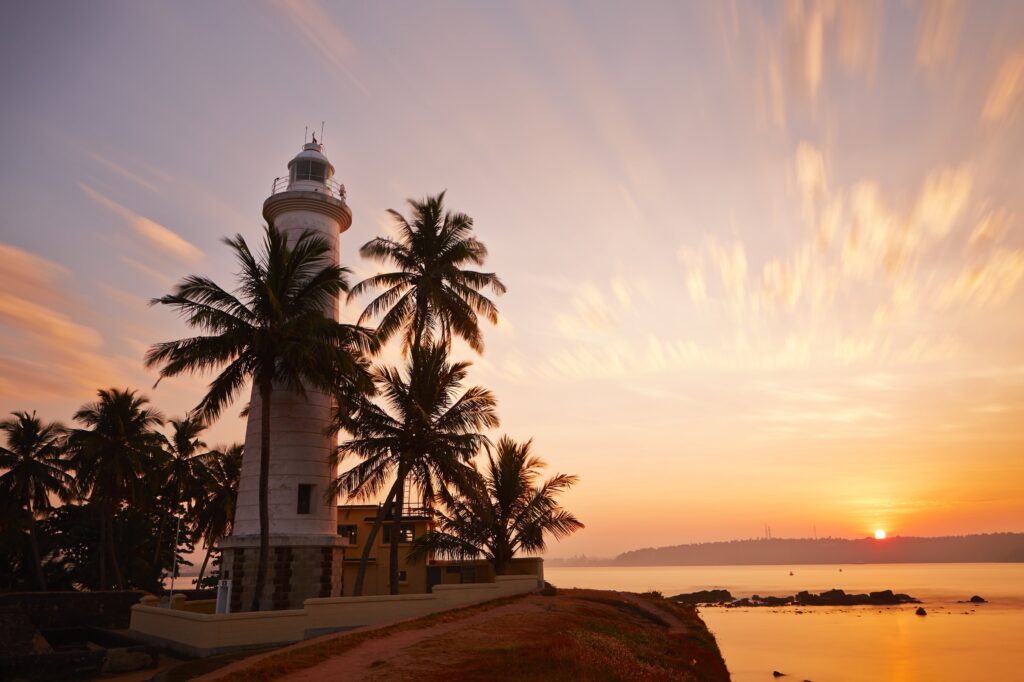Welcome to the southwest coast of Sri Lanka, to the historic city of Galle. Adorned with sun, surf, beach, and history, it has been one of the prime, Exotic filming locations in Sri Lanka for many decades. Galle city can be reached by driving 2 hours southeast from the capital city of Colombo. Galle Fort, located between the surf towns of Hikkaduwa and Weligama, is easily accessible as a day trip from either location. Galle-Fort, with a population of under 1000 residents, is just a fraction of the 115,000 people that live in the greater Galle city area.
Within this city lies a fortified fort that was first built by the Portuguese in 1588. In the present day, it is a historical, archaeological, and architectural heritage monument that has stood the test of time half a millennium later. This is arguably the most iconic location in the city of Galle, as it presents any modern filmmaker with a multitude of locations, scenarios, and scene-setting options that could be included in your next film project. From high-end boutique hotels to unique restaurants, tiled walking paths, historical landmarks, and breathtaking ocean views all around.

History.
Sri Lanka was colonised by the Portuguese (1505 – 1658), the Dutch (1658 – 1796) and the British (1796 – 1948). Despite the fact that the Portuguese built the Galle fort, the Dutch and English colonizers fortified and rebuilt it to their liking.The Portuguese had moved to Colombo from Galle as they preferred the latter. In 1588, however, they were attacked by the Sinhalese King Raja Singha I (1581–93) of Sitawaka, which forced the Portuguese to return to Galle. At Galle, they initially built a small fort out of palm trees and mud. They called it the Santa Cruz, and later extended it with a watch tower and three bastions and a “fortalice” to guard the harbour.
The Dutch entered the fray in 1640, joining forces with King Rajasinhe II to capture the Galle Fort.The Dutch, with a force of some 2,500 men under Koster, captured the fort from the Portuguese in 1640 itself. Although not an ideal situation for the Sinhalese, they were instrumental in building the fort as seen in its present form in the Dutch architectural style. Fortifications were added up to the early 18th century.
After the fort came under the control of the British in 1796, it remained their southern headquarters. They made many modifications to the fort, such as closing the moat, building houses, a lighthouse on the Utrecht Bastion, a gate between the Moon Bastion and the Sun Bastion.
Galle Fort The Filming Location.
Sri Lanka was colonised by the Portuguese (1505 – 1658), the Dutch (1658 – 1796) and the British (1796 – 1948). Despite the fact that the Portuguese built the Galle fort, the Dutch and English colonizers fortified and rebuilt it to their liking.The Portuguese had moved to Colombo from Galle as they preferred the latter. In 1588, however, they were attacked by the Sinhalese King Raja Singha I (1581–93) of Sitawaka, which forced the Portuguese to return to Galle. At Galle, they initially built a small fort out of palm trees and mud. They called it the Santa Cruz, and later extended it with a watch tower and three bastions and a “fortalice” to guard the harbour.
The Dutch entered the fray in 1640, joining forces with King Rajasinhe II to capture the Galle Fort.The Dutch, with a force of some 2,500 men under Koster, captured the fort from the Portuguese in 1640 itself. Although not an ideal situation for the Sinhalese, they were instrumental in building the fort as seen in its present form in the Dutch architectural style. Fortifications were added up to the early 18th century.
After the fort came under the control of the British in 1796, it remained their southern headquarters. They made many modifications to the fort, such as closing the moat, building houses, a lighthouse on the Utrecht Bastion, a gate between the Moon Bastion and the Sun Bastion.

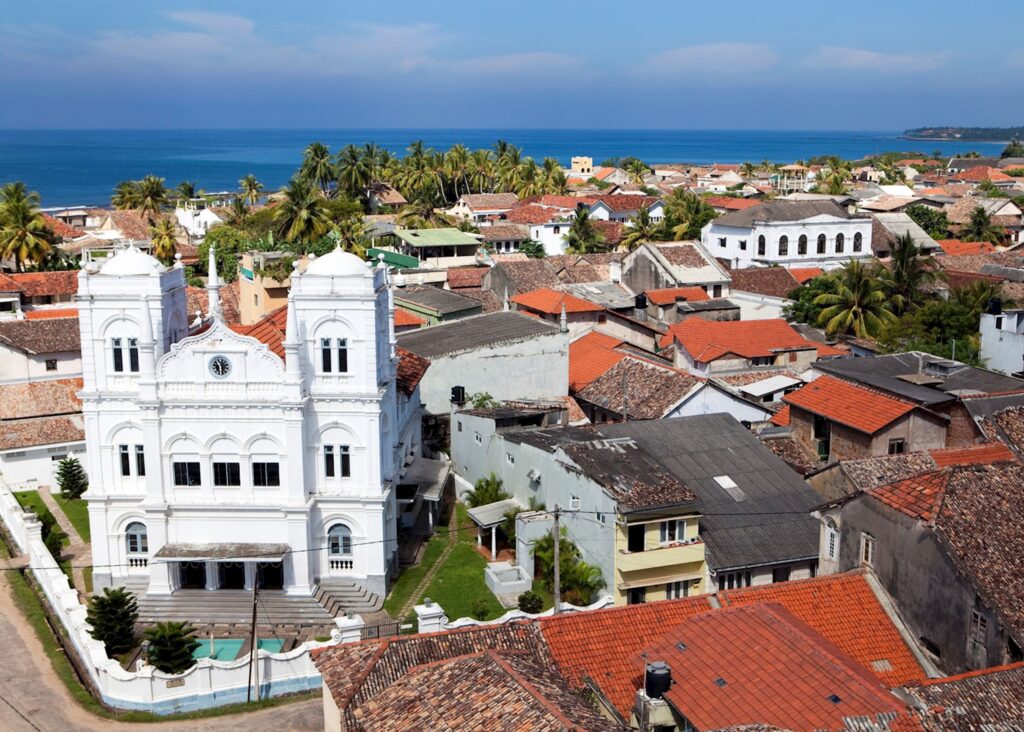

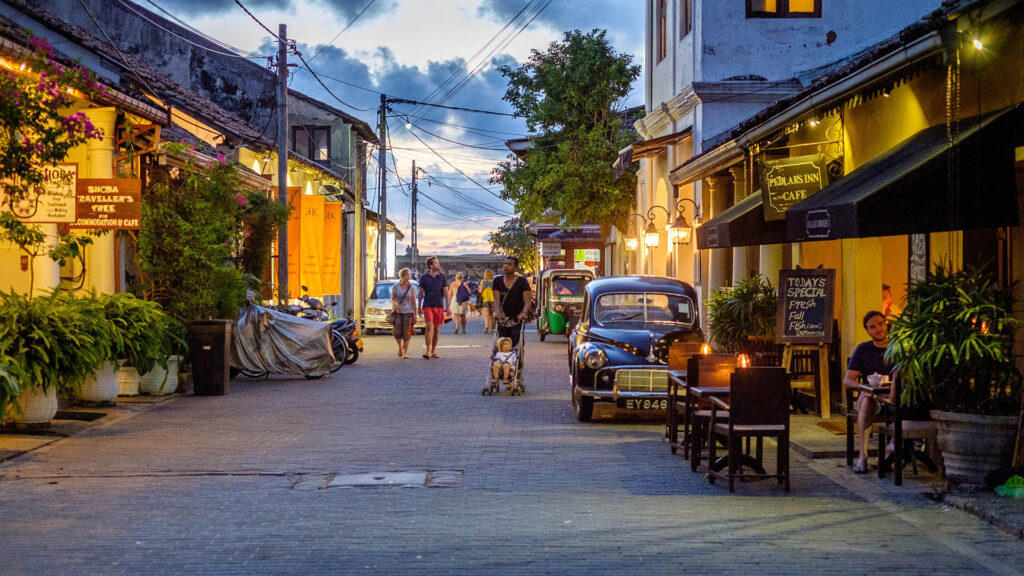


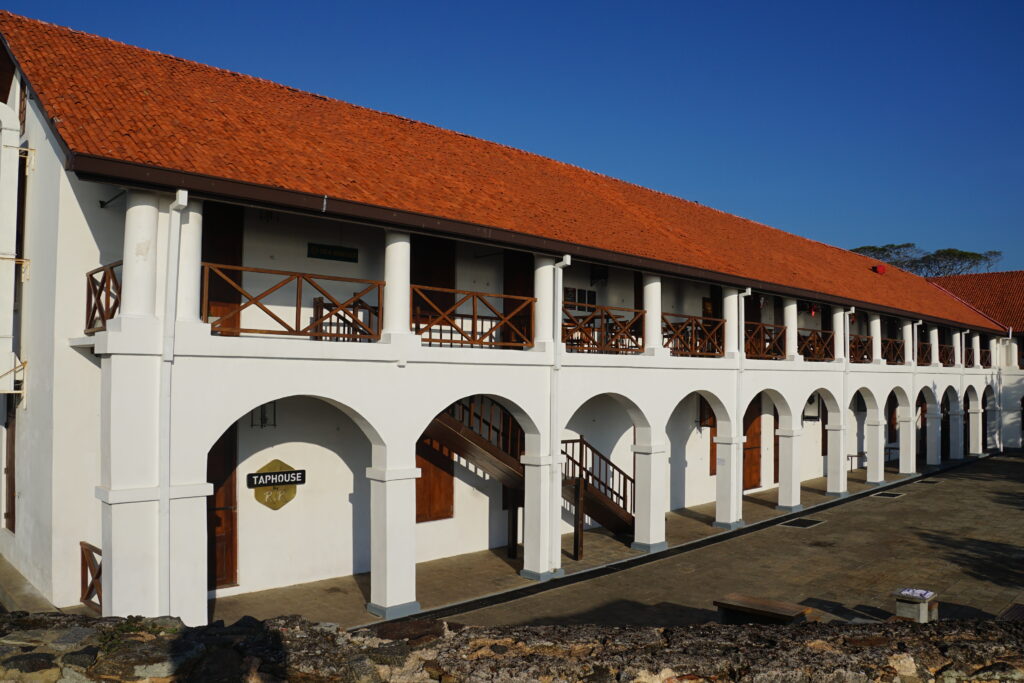
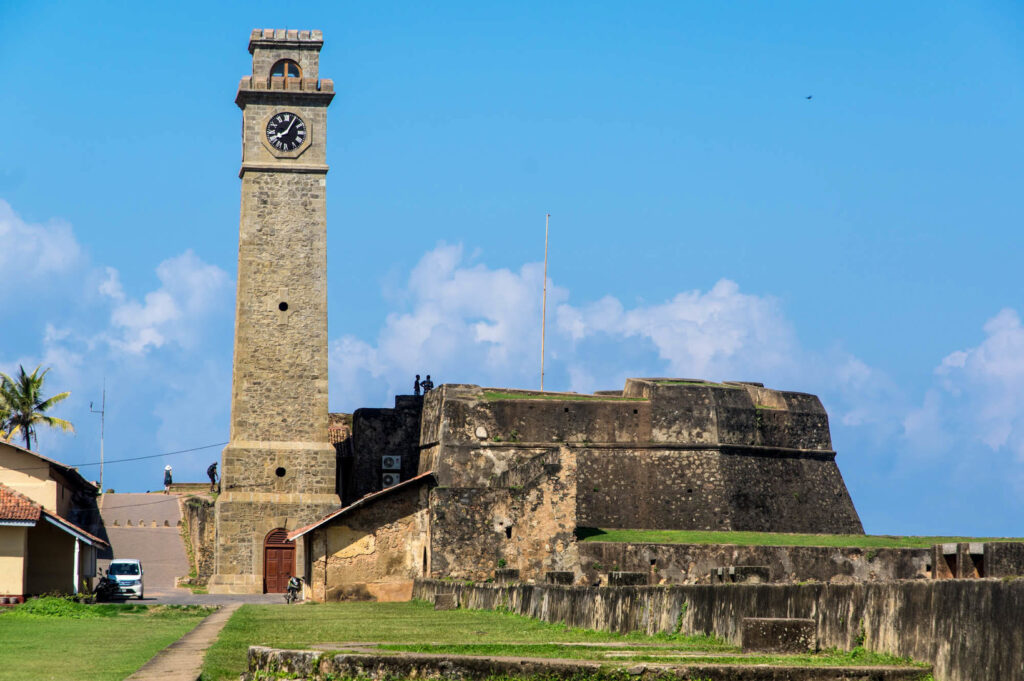



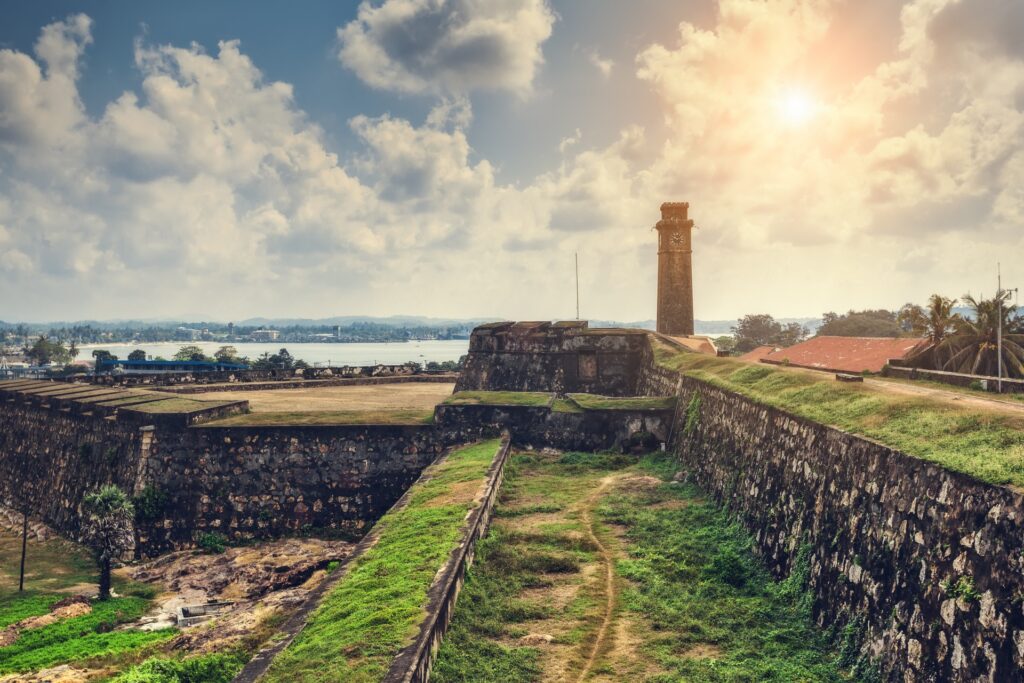
Galle Fort Landmarks.
Galle is a melting pot of fusion, culture, and architecture that is easily reflected in its landmarks. There is a uniquely European feel as you wander among Dutch-style buildings under the shade of coconut trees. It’s hard to escape the uniqueness of these buildings even if you are not an architectural enthusiast. You will find a selection of fascinating museums, churches, lighthouses, and clock towers that will take your breath away.

“Groote Kerk” (Dutch Reformed Church)
The Groote Kerk (Dutch Reformed Church) was built in 1640. However, it was remodeled between 1752 and 1755. The church is paved with gravestones from the old Dutch cemetery. There is an old organ of 1760 vintage in the church where services are held, and a pulpit made of calamander wood from Malaysia is used.

National Maritime Museum
The National Maritime Museum, which was opened to the public on May 9, 1992, The National Maritime Museum originally specialized in the fauna and flora of the sea. Artifacts consisted of underwater artifacts and scaled-down models of whales and fish. The museum displayed a variety of exhibits connected with seafaring, maritime trade, fishing, and sea life, including relics retrieved from the 20-year-old maritime archaeological sites around Galle.

Old Dutch Hospital
The Old Dutch Hospital, Galle (also known as the Old Galle Dutch Hospital) is one of the oldest buildings in the Galle Fort area, dating back to the Dutch colonial era in Sri Lanka. The heritage building has now been developed into a shopping and dining precinct with an array of bars and restaurants that add to the vibrancy of Galle Fort.

All Saints church
This Anglican church was built on a basilican plan in a Victorian Gothic Revival style of architecture, modified to suit the local climate. The plan of the church is cruciform, firmly supported on stone columns and arches carved beautifully in timber. Masonry arches were built in local kabok and lime mortar. The heavy pews, with carvings of the Jewish Star of David, and the sanctuary are all made from Burmese teak.

Galle Fort Clock Tower
The Galle Clock Tower (or Anthonisz Memorial Clock Tower) is located within the Galle Fort in Galle, Sri Lanka. The Clock Tower is a popular landmark and overlooks the central Moon Bastion, on the site of the former guard room. The clock tower was constructed in 1883, paid for through public subscriptions by the people of Galle.
Conclusion
The Galle fort is a filmmaker’s dream as it has a multitude of different locations all enclosed within the walls of this ancient architectural masterpiece. Colonial architecture and antique-style furniture take you back to Sri Lanka’s Colonial era, enabling you to experience the lifestyle of Ceylon’s governing elite in 18th and 19th century Ceylon with modern-day luxury comforts. From stunning villas, restaurants, walking paths, and centuries-old buildings, all enclosed right next to the stunning Indian Ocean, this is one of the most iconic locations to shoot in Sri Lanka.
